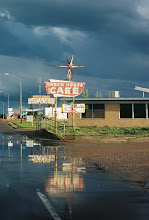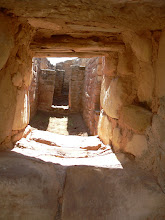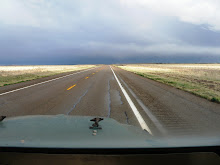This is an old essay, but I wanted to post something and everything I'm working on at present is either going elsewhere or is in no shape to show. It first appeared in "Iron Horse Literary Review" First Frost 2004, Vol. 6, Number one.
Chicken Slayer
This is one way you could spend a Saturday morning: standing ankle deep in Johnson grass, shooting chickens. And though I'm fundamentally opposed to killing for the sake of killing, that's pretty much what I'm doing, all in the name of dog training.
I have a friend named Dusty, whose last name I’ll omit and he’s a pretty good dog trainer. He’s not the best, as all of his dogs that I've hunted over him had some, shall we say, progress to make in regards to obedience. On the other hand, Dusty tries to train dogs the old-fashioned way, which is to say he does his best to hunt them a lot and despises shock collars, which though effective in the hands of one with some sense and patience, all too often become an instrument of torture when misused by
a novice or worse, a control-freak with something to prove.
Dusty knows that I have a weak spot for grilled quail and on the occasions that I have helped him with his training, the deal is always the same—any quail I shoot are killed on the condition that I get to keep and eat them. I especially adore Bobwhite quail marinated and then lightly grilled over mesquite coals, though in a pinch almost hardwood will suffice. Throw in a pilaf of wild rice, perhaps a filet of tenderloin or a bone-in ribeye, tossed green salad, sourdough bread and sweet tea and you have first rate meal. If the hunt has been very good, substitute a saddle of venison for the beef, a bottle of your favorite red wine for the tea or whatever lesser beverage you’d considered, a couple of old friends and you’re soon to be in the thrall of true culinary decadence. But that is for another time.
Now, sweet and affectionate as many hunting dogs are, they still constitute a weird bunch. Though hunting is bred into them and is about all they know, their vision of the hunt is not that of the man, requiring as we do assorted equipment such as boots, heavy trousers, gun, hat, sunglasses and so forth. This is, of course, only a partial catalog; I’ve hunted with men who required all that as well as a camper—which sometimes is a double–wide trailer—custom made Italian shotguns, concubines. This is a list capable of infinite expansion, ad absurdum. For the dog, due to the pressures of evolution, hunting as a solitary pursuit is just fine and all things being equal, one that frankly, you’re not invited to join. One of the factors that makes all this work, the dogs I mean, is that they don’t view hunting as a pleasant pastime that helps them unwind. Of course it probably is pleasant for a number of them as it entails getting out of some cramped cage or backyard, but when a pointer, spaniel, setter or whatever is making war-talk with birds, it’s not for fun, it’s tapping into the oldest of crucial imperatives, which brings up the problem of untrained dogs and birds that have been shot. Suffice it to say that in my long association with gun dogs and near poverty, more often than not I hunted with partially or poorly trained individuals who, though unsure of my role in all of this, gladly gobbled up anything I shot. For the first few years of my hunting life downing a quail precipitated a mad dash for the fallen quarry in hopes of beating the dog to it. For a while, with all the sprinting I was doing, it seemed that I might as well have been carrying a starting pistol rather than a shotgun.
This, of course, is where the dog trainer comes in. It's his or her job to convince these muscle bound, high octane beasts to suppress their more pressing desires and hang around with some guy who probably doesn't get out more than a five or six times a year, loafing up and down the fence rows, lummoxing the easy ground and, in general, avoiding the brush, woods, briar patches, creek beds and all other spots that are most conducive to finding wild game intent on avoiding predators, regardless of how inept that predator might wind up being. And then of course, to retrieve and then hand over all of those yummy tasting creatures on the say-so of the fool who has been little more than an annoyance, is not something that comes easily to the dog psyche.
Whatever the other impulse that inform and drive hunting, some atavistic gene or misplaced machismo, it is also big business and, so it follows, is dog training. A well bred, well trained or “finished” in the parlance of those in the know, hunting dog will start at about fifteen hundred dollars. From there the price just goes up.
One of the myriad ways in which this subjugation is achieved is through a form of positive reinforcement. Which leads us back to why I'm standing out in a six acre pasture watching a young boy stuff a smallish Barred-rock hen into a bird launcher.
For the trainer of gun dogs who finds himself with a less than perfect set-up—like say he made a poor choice of parents and didn’t inherit a several hectare ranch teeming with quail to train his dogs on, bird launchers are indispensable. A spring loaded device that—in theory at least—is designed to simulate hunting-type situations, they are affordable, portable and easy to use. Under normal circumstances quail are used. The bird is placed in a paper sleeve that looks suspiciously like a Chinese take-out box, loaded in the launcher and a spring on the device is compressed. The trainer, with dog and shotgun, then begins to work his way toward the place where the launcher has been secreted. The trainer may or may not know where the launcher is; in any event he relies on the dog to scent the quail and lead him to it. When the dog goes on point, a helper yanks on a long cord—or if the launcher is radio controlled, punches a button—and the quail is hurled twenty or thirty feet into the air.
Now, cruel and inhumane as all this sounds it's, for the most part, not all that bad. For starters, no hunting situation prepares you for the quail's sudden acceleration out of the launcher; they attain vertical air speeds that are impossible in the wild. Also, wild quail may flush from anywhere, but they almost always fly straight. With the bird launched variety, you may know from whence they come, but you never know where they're going. As a result, a good number of them get away. And, on a psychological note, nothing quite prepares you for the sight of a quail rocketing ass-first out of a clump of broom weed. I’ve found myself standing in slack-jawed amazement, my gun a forgotten stick in my hands more than once by this vision. In a post-Wright brothers world, it takes on Apocryphal dimensions.
On this particular day I had another reason to go, in that I had just gotten a new side by side shotgun and hadn’t had spent enough time with it to feel comfortable yet. My old shotgun, a Browning Auto-5, was one that I’d hunted with for almost twenty five years and which felt almost like an extension of my hands. I’m not bragging when I assert that over the years I had become a superb shot with the Browning, nor am I being overly modest when I note the obvious: if a quarter century’s familiarity with any given tool doesn’t yield significant results something is wrong. Or as my friend Mike Milliken would say, “It’s probably not the bow, it must be the Indian.” My new shotgun was a Winchester double barrel “Golden Quail” edition and was both shorter and lighter than my old semi-automatic. In short, a different piece altogether, much like stepping down out of an old FJ-40 Landcruiser and into a sleek Mercedes roadster.
On the way to the ranch, I slowly drove with the truck windows down and hung my head—dog-like—out the window. It was late March and an absolutely beautiful day like we sometimes get in this part of north Texas. There was a light northeasterly breeze that had blown the sky clear and looking up into the cerulean blue was nothing short of breathtaking. Though not truly migratory, Red Tailed hawks ease a little farther south in the winter and there was a veritable cloud of them drifting in big lazy circles half a mile above me; there must have been a thousand of them. The temperature was in the fifties, but in the sunshine felt much warmer and imminently comforting.
When I rattled over the cattleguard at Dusty’s, it felt much too soon and I was surprised and a little annoyed to see a pretty good sized crowd milling around. Families. I parked my truck and walked over to where Dusty stood with a few men, some I’d met; most were strangers.
“Glad you could make it,” Dusty said, extending his hand. I was introduced and we all made the usual comments about the dogs, the weather, one or two of the women and then Dusty called me aside.
“We’ve got a little, ah, problem.”
The problem, as you’ve no doubt guessed was that Dusty, due to some unavoidable circumstance specific to the laws of supply and demand, had been unable to find quail and had chosen to substitute chickens. I looked at him for a long moment, waiting for a punch-line that didn’t come. Then I asked him why there were so many people, to which he answered that he was giving a demonstration in hopes of selling some bird dogs and maybe picking up a few more to train. I asked him if using chickens was such a good idea, in light of the fact that the launchers were designed for quail. It’s true that there are gaps in my knowledge of physics big enough to sneak an elephant through, but still, I have working handle on the basics. After all, Dusty’s launchers had been designed for birds that might have a live weight of eight to ten ounces, not the heavier and much bulkier fowl he had in mind. He dismissed my question with an airiness that I at first mistook for the confidence born of experience; I was soon to come to the realization that what I was wondering about had never crossed his mind.
By now a sizeable crowd had formed, made up in no small part of women and young children. I was increasingly feeling that nothing good could come of this. Dusty was addressing the crowd, introduced me and made some general comments about the state of hunting and how beneficial a sport it is—fun for the whole family, that sort of thing—and then it was time to begin the demonstration.
I took my position with the dog—a big liver and brown pointer named Skip Again—and he went to work. I have to say that this was the high point of the day, though none of us knew it at the time. Skip Again performed flawlessly. Dusty had taken the chicken some minutes before and carried her around in an elaborate “pattern”—a convoluted series of stops and circles at different piles of brush, mesquite, a dry creek-bed—and then had placed him in the launcher, all of this out of sight of Skip who was in a dog box in the bed of Dusty’s truck. The pointer was then released and over the next fifteen minutes focused his considerable talents toward ferreting out the chicken’s hiding place.
After what seemed like an eternity, Skip Again froze on point, a sight which—for the quail hunter at least—is one of almost indescribable joy. We moved slowly towards a little clump of mesquite branches. I murmured “Steady, Skip, steady, birds Skip, birds...” and so forth at which point Dusty jerked the release cord.
As I explained earlier, this is usually the point at which the Chosen Bird—as my father in one of his stranger Biblical allusions calls quail—will explode from the contraption streaming contrails of feathers on a rather erratic flight path. Chickens, however, do not.
Chickens, shall we say, rise with considerably less vigor. Imagine drop kicking a medicine ball and you get the idea.
The dog had been through this drill before, only with quail, and was wholly unprepared for the strange, whitish apparition that rose as if in slow motion from the mesquite to hover momentarily at its apogee about four feet off the ground.
In retrospect, it was a causal chain of events that conspired against us on that first chicken, but it cast a pallor over the rest of the day nonetheless. Dusty had waited a little too long to release the trap and as a result I was standing much closer than I would have ordinarily been when the chicken made her maiden voyage. I made two, fairly unrelated mistakes; first, I showed up at all, and second, I accidentally fired both barrels almost simultaneously, which is fine if you’re stopping a home invasion, but a bit much even under circumstances as strange as these. Skip Again’s only mistake was in reality his ancestor’s fault: they overcame their natural fear of mankind and began to trust our judgment.
There’s no delicate way to approach this, so I’ll just say it: the chicken exploded in a red spray of feathers, meat, blood, bone and all the other ingredients that make a chicken a chicken. All of this proved too much for Skip Again who fled shrieking and howling to hide under the barn.
Later, while we tried to coax the dog from his hiding place—and a few women comforted their children—I told Dusty that I didn’t think using chickens was such a great idea. We’d only shot one at that point, and I felt that the results had been sufficiently unlovely to indicate that it was one too many. Dusty said he understood, but he had potential clients out there as well as a hundred dollar’s worth of chickens he’d bought just for the occasion.
“Besides, you still get to keep what you kill,” he said. I glanced over to where the event had transpired. There was a six foot radius of fly buzzed matter; a few rouge tinted feathers floated on the desultory breeze. I began to experience serious misgivings.
All I can say about the rest of the day is that with the new gun, my shooting was not accurate as it would otherwise have been and that accounted for the fact that I missed several of the chickens outright. This problem was exacerbated by Dusty, who in attempting to avoid a repeat of the rather spectacular demise of chicken numero uno, began releasing them too early. Unfortunately, unlike quail, who would have flown a ways and then hit the ground at a high lope headed for safer havens, the birds I missed ran around in uncontrolled chicken-hysteria, squawking and flapping just out of reach of a dozen pursuers, many of them children. Still, most were somehow rounded up and summarily sent through the firing line again.
After an hour or so, the crowd had thinned considerably. There were still a couple of families left; whether they were planning on buying a dog or were just trying to get the facts in order—license plates and so forth—so they could report us to the SPCA, I don’t know. The area around the training facility looked like the work of a deranged shotgun-voodoo cult. It was horrible.
I walked over to the pile of dead chickens and looked them over, deciding that this was about as far from the spirit of hunting as I cared to careen. Dusty was standing some distance off, talking to a few men, but he was looking at me. I picked four of the birds up by their feet, walked over and when I told him that I thought I’d shot enough chickens for one day, even he looked relieved.
It was getting on to dark when I got home. The wind had swung around from the north and the temperature was dropping fast, so I hurried out back of the house to start cleaning the chickens I’d shot. My hunting dog Tejas, a big Chesapeake Bay Retriever, sauntered up in idle curiosity and flopped down on his rump. He cocked his head to one side as if to say “I thought we left the chickens alone.” I said “shut-up,” and went back to my work. When I was through, I flung the remains over the fence where my own chickens, a mixed bunch of Plymouths, Long Island Reds and Dommaneckers ran up and fell to with gusto. I watched my cannibalistic chickens for a moment and then thought “Maybe I ought to shoot them too.” My girlfriend walked out onto the porch, took in the scene and then walked back inside, closing the door softly behind her. Tonight, I decided, would be a night for salad.
27 August 2009
Chicken Slayer
travel ranch university
Browning Auto-5,
CC Filson,
chickens,
Denton,
Hunting dogs,
poor choices...,
Texas,
Winchester Golden Quail
Subscribe to:
Post Comments (Atom)













.jpg)








Cracked me up! Very good read. Chickens, ha.
ReplyDelete